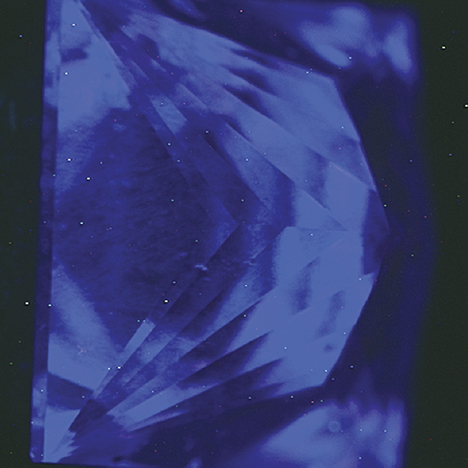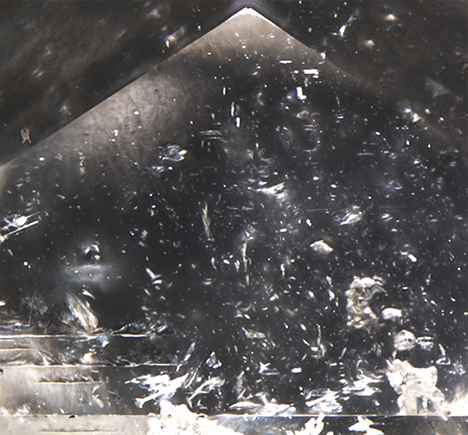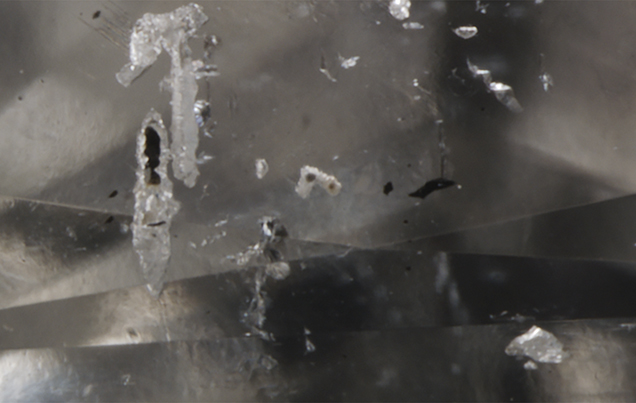CVD Synthetic Diamond with Unusual Inclusions

Figure 1. This DiamondView image of the 0.34 ct CVD synthetic shows a pattern of
growth dislocations. Image by Troy Ardon.
The most unusual features were the inclusions. As seen in figure 2, this item is deserving of its SI2 clarity grade. In addition to several fractures, there were numerous indented crystal surfaces and included growth remnants. A close-up of the indented crystal surfaces revealed an irregular shape and surface texture (figure 3). The fully included growth remnants lacked any discernible pattern or regularity. Inclusions have been reported in CVD synthetic diamonds, but they have been confined to growth planes (Spring 2013 Lab Notes, pp. 47–49). This specimen’s inclusions, which were scattered in a random way, showed no uniformity in size, shape, color, or placement. They were whitish or black, pinpoint-sized and larger structures (as seen in figure 3, lower right). Some were flat and pointed, while others were more rounded in shape. Furthermore, some were grouped together, similar to cloud-like inclusions, while others were freestanding, mimicking the inclusion distribution in natural diamond. The strain was mottled around the inclusions and crosshatched in cleaner areas.growth dislocations. Image by Troy Ardon.

Figure 2. The pavilion displayed a wide variety of inclusions. Photomicrograph by Troy
Ardon; field of view 3.6 mm.
Ardon; field of view 3.6 mm.

Figure 3. A close-up of some of the indented crystal structures showed etch-like patterns. Photomicrograph by Troy Ardon; field of view approximately 1.4 mm.
The chemical structure and composition of these inclusions is unknown, and why they formed this way is a mystery. It is possible that this material is from a new growth method that yields heavily included product. Synthetic diamond research is a rapidly growing field; as it expands, many new and different types of samples find their way into the trade. The inclusions in this specimen could pass for natural inclusions if observed with a standard 10× loupe or a quick glance in the microscope. The DiamondView image is also difficult to interpret if one is not accustomed to the many fluorescent patterns CVD synthetic diamonds can display. This case is an important reminder to exercise caution when determining natural or synthetic origin, because some synthetic diamonds in the market look very natural.


